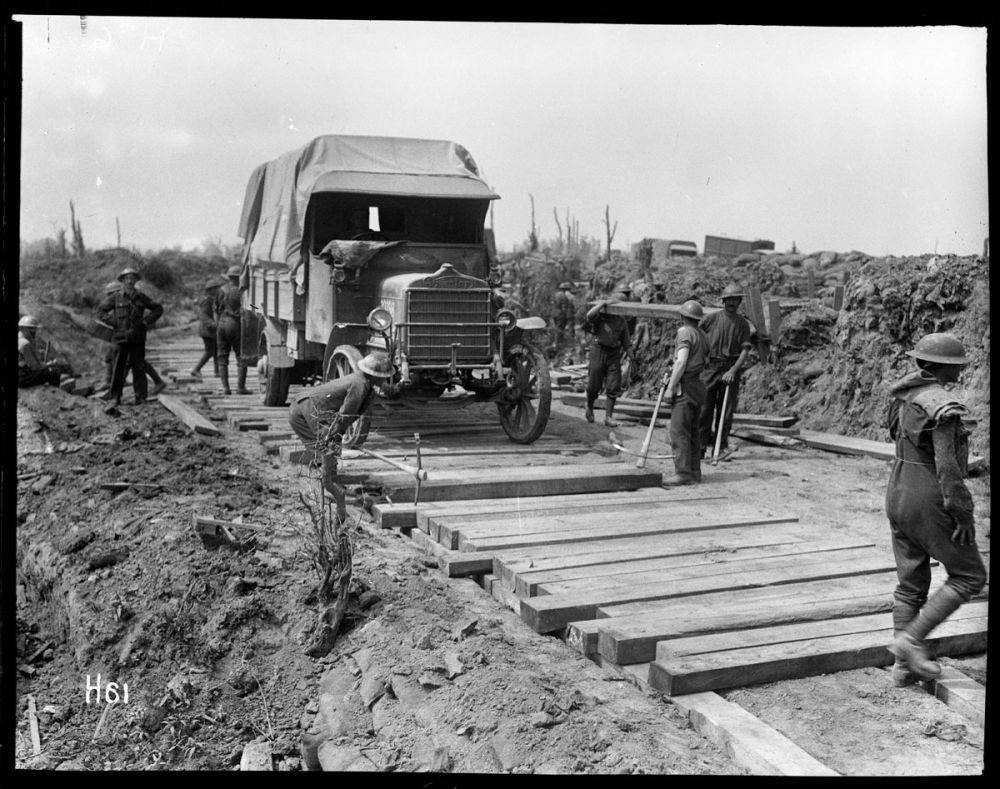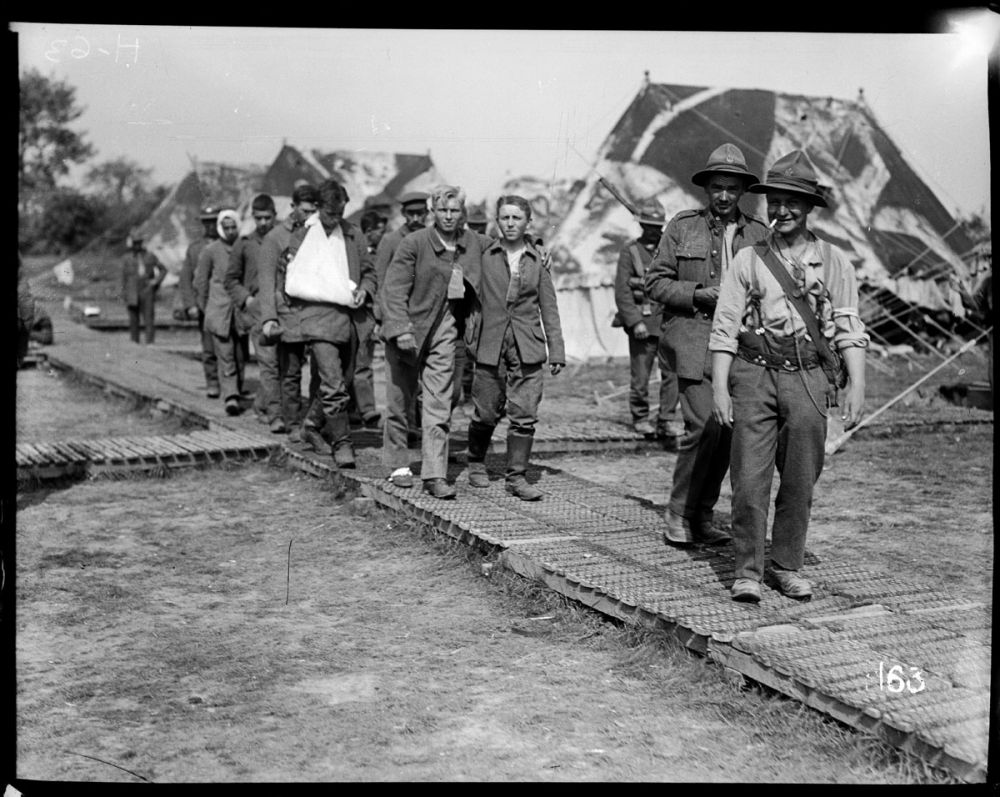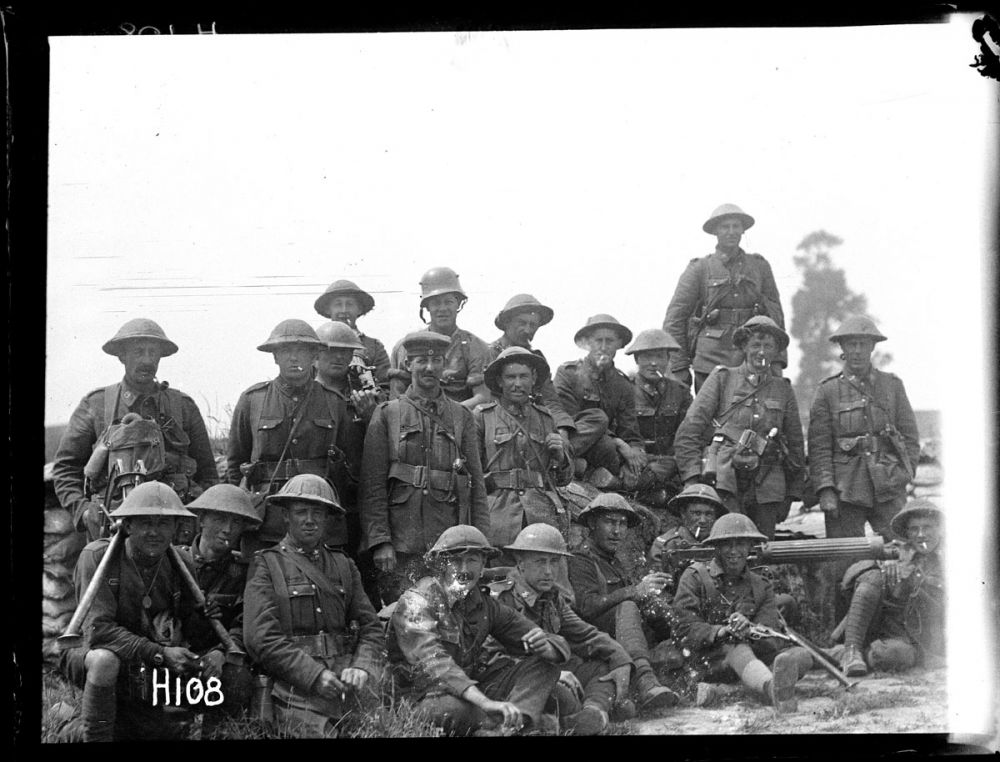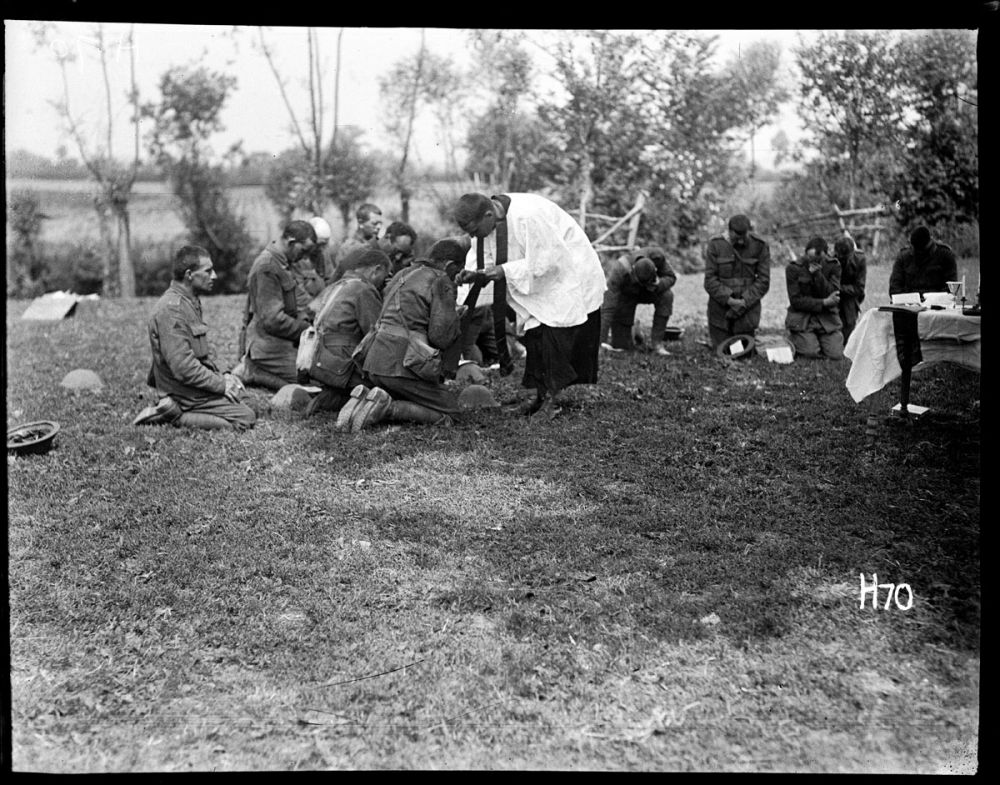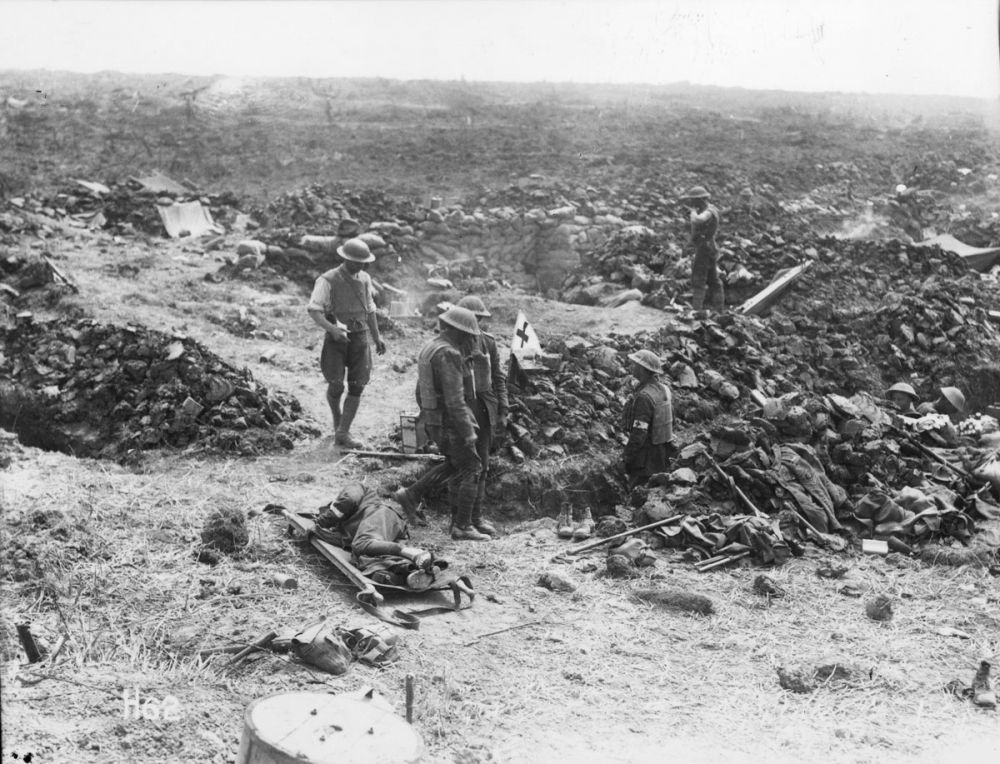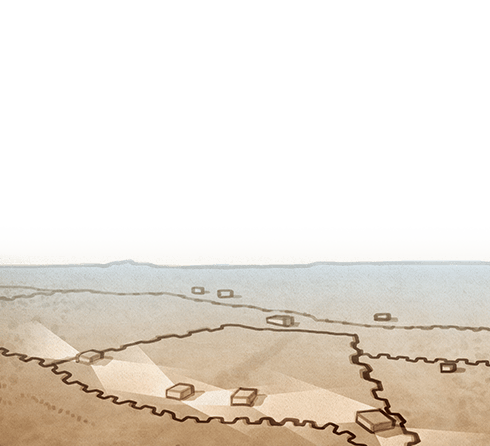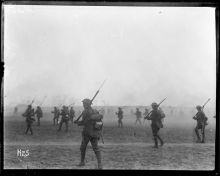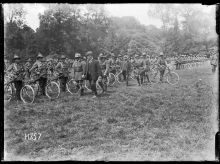Messines Ridge British Cemetery
You are now standing at the entrance to the Messines Ridge British Cemetery. In front of you is the New Zealand Memorial to the Missing for those who died in the battle of Messines both in 1917 and during the German Spring Offensive in 1918. Most of the 828 names on this memorial are from the battle of Messines - from 7 to 14 June.
The memorial itself is formed from the base of the windmill of the Institute Royale. This windmill was destroyed in the fighting between 1914 and 1917. It became a very important strong-point on this left flank boundary of the New Zealanders and was used by the Germans, against the attack coming out from the valley that you see to your left - up the road.
The New Zealand Pioneers and the Cyclist Battalion cleared the route forward through the wire. They established a mule track, which is roughly the line of the road you see in front of you, for hauling weapons and supplies, and this track became the major evacuation point for all the New Zealand wounded up here on the ridge. When the New Zealanders took this ground, the shelters in the base of the windmill soon became the central hub for all the battalion regimental aid posts, and the surrounding area was used to bury the dead, forming the cemetery that you now see. The only Roman Catholic priest present was the Reverend J. J. McMenamin of the New Zealand Division and he was killed by artillery fire while burying the dead.
The New Zealanders advanced up beyond here and down the far slopes of the ridge so that by 5.20 in the morning they’d secured their objective, well ahead of schedule. Mid-morning, the Otago Mounted Rifles, in a rare mounted operation, recce’d the area forward of this position to your right, along the road - looking to gather information about the German retreat and if there were any positions left to deal with. They were met by long-range German machine gun fire and suffered casualties. Later in the afternoon, elements of the 4th Australian Division pushed through and continued to drive the enemy back down the reverse slope to the final objective, the Oosttaverne Line.
It’s not until 8 June that the area was consolidated and positions sorted out. The Germans were now in full retreat. On 8 June, Major-General Russell of the New Zealand Division stood here, alongside Brigadier-General Brown. An artillery shell exploded and killed Brown, wounding others, and Russell was lucky to escape unscathed.
The cost of the battle of Messines is shown on this memorial. There were some 3,060 New Zealand casualties, and if you walk around and look at the names, there are some notable people commemorated here: George Sellars, one of the original All Blacks of the Auckland Battalion; Charles Sciascia, a Māori All Black who was killed in August at La Basseville, and Sergeant Penrose of the Rifle Brigade, who was recommended for the Victoria Cross for his bravery in the fighting here at Messines.
Messines was an outstanding victory, despite the casualties, and one in which all nine Allied Divisions played their part, New Zealand among them. Messines also showed just how much the British had learnt and improved since the battle of the Somme. This success provided Haig with the springboard to mount the Ypres offensive, culminating in the battle of Passchendaele. This was a victory that was much celebrated and was a great boost to morale, but here at this cemetery we get a glimpse of the true cost.


